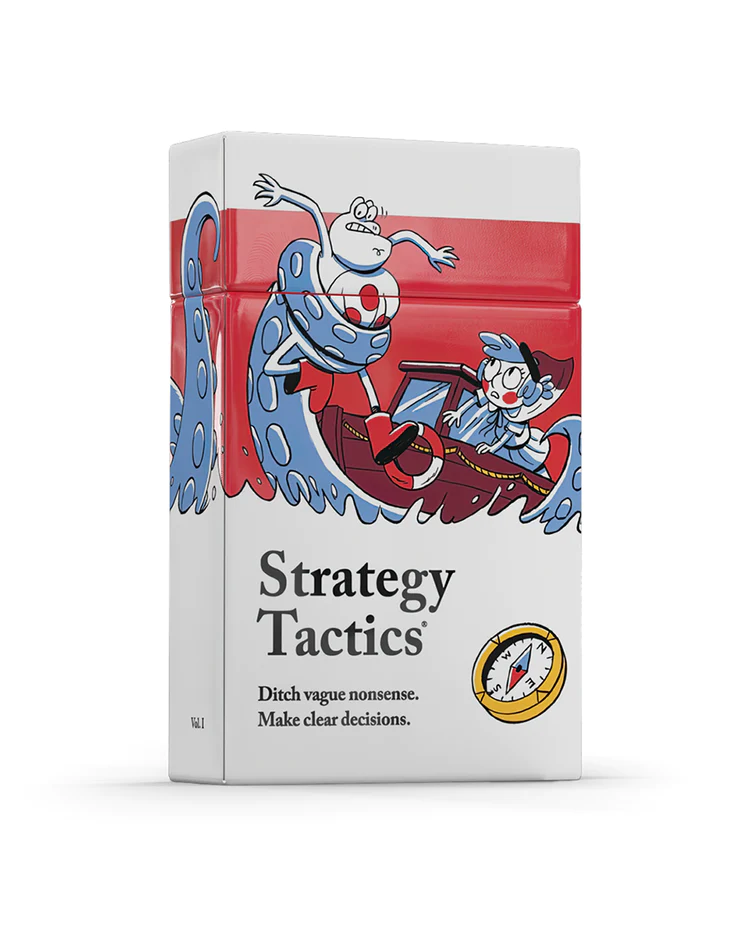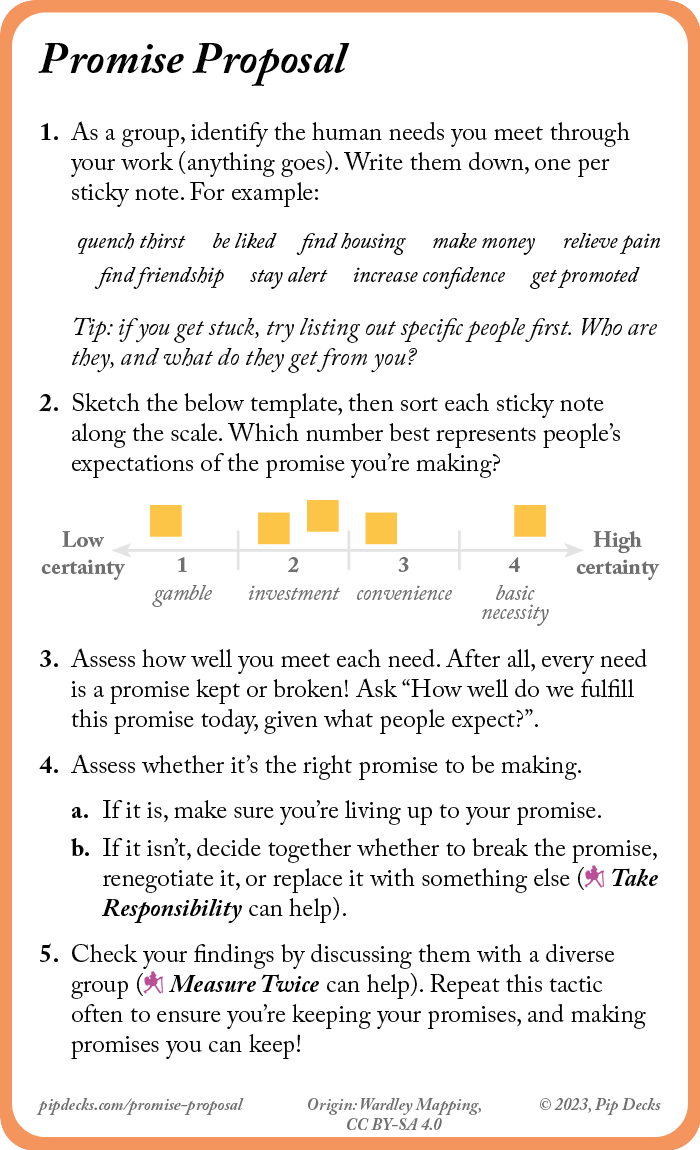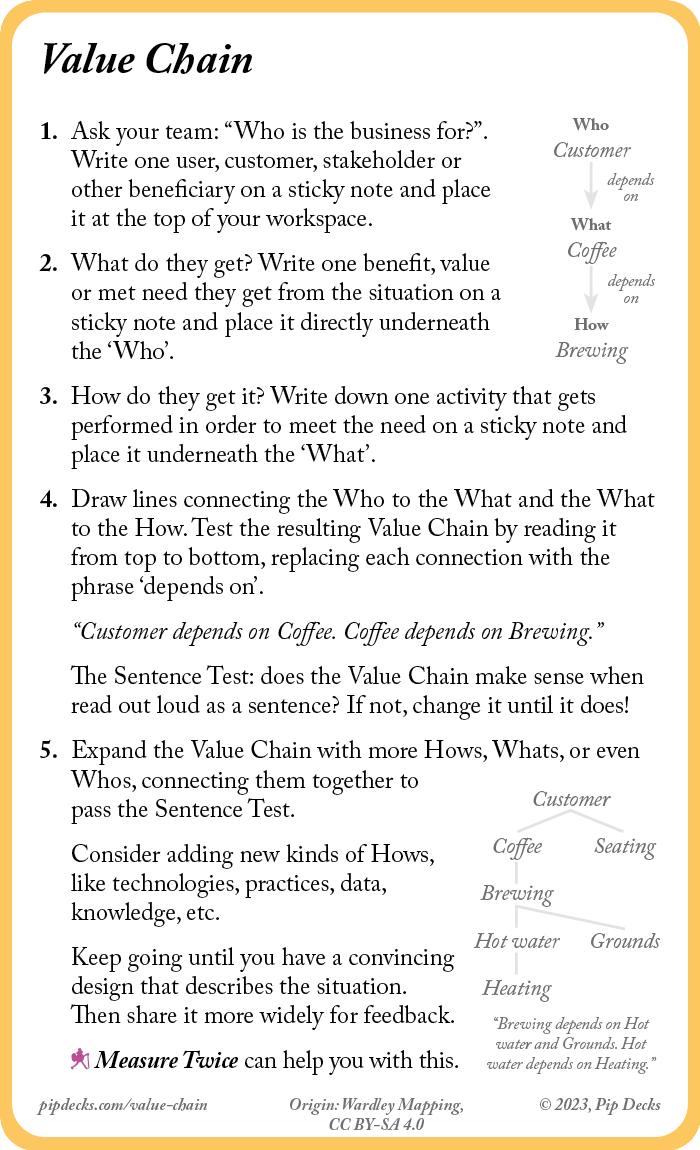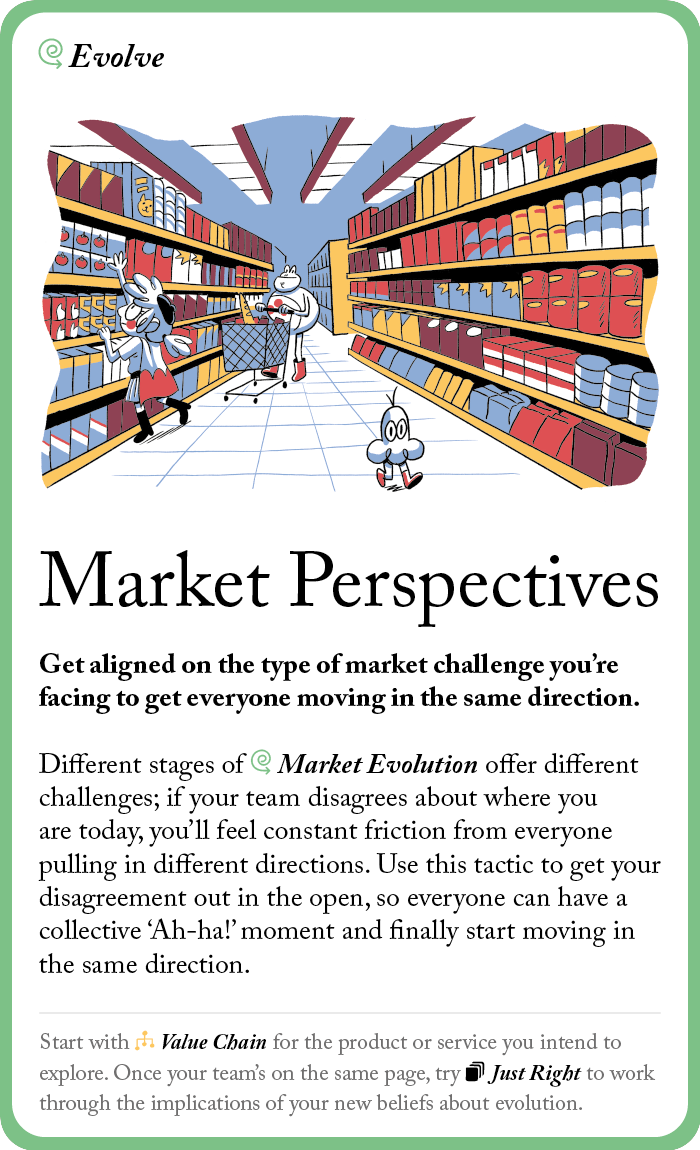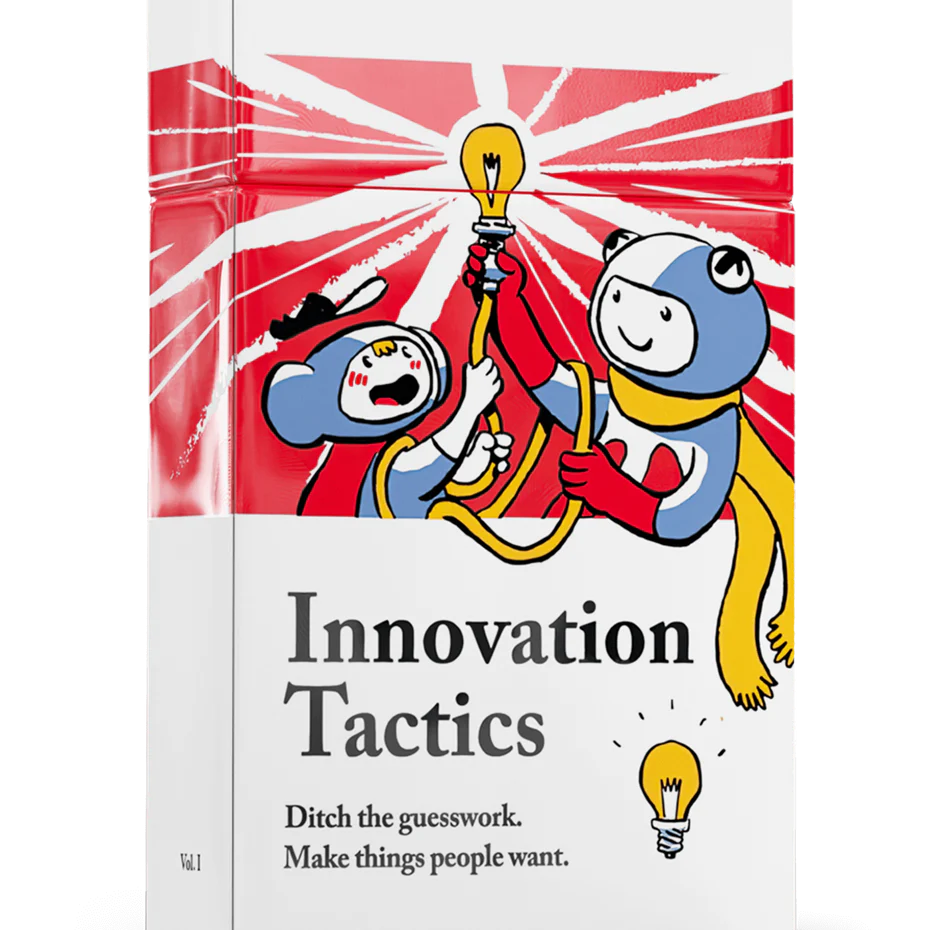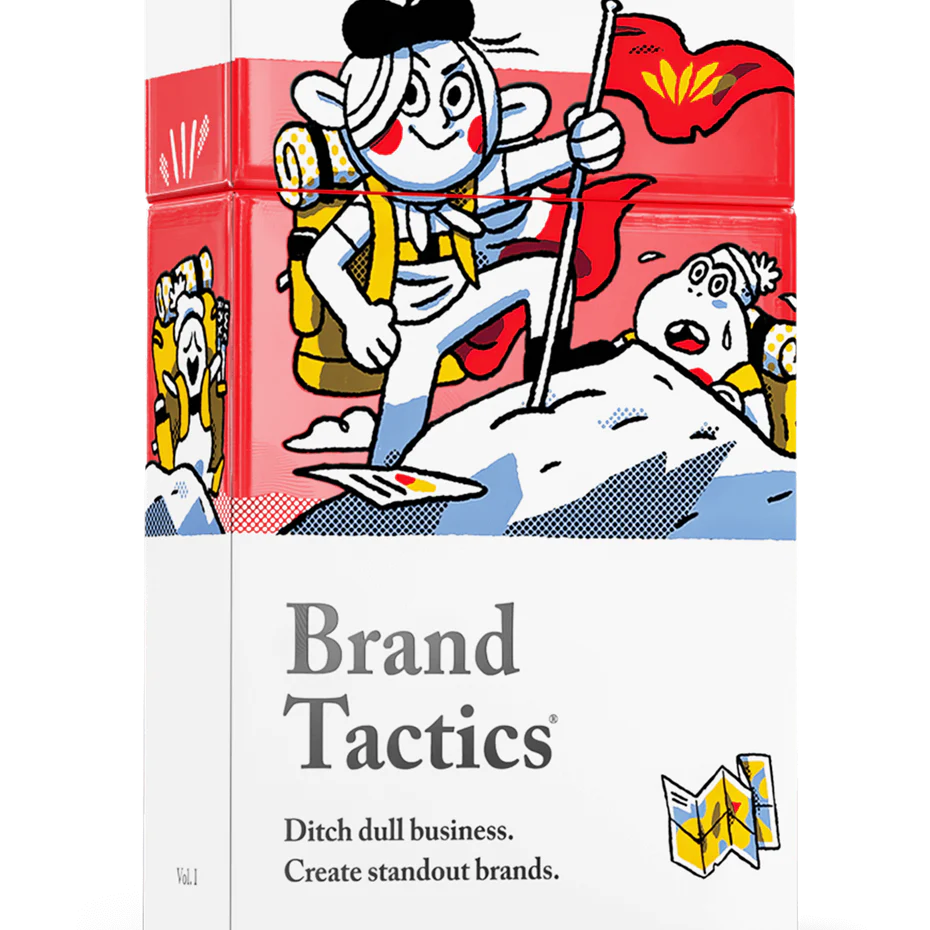Applying Wardley Maps to Product Development Decision-Making
Simon Wardley is a business leader who set out to do more than just establish direction and implement strategy. Strategy Tactics is a tool deck that helps you apply Wardley Maps through a developmental process.
A Background in Wardley Mapping
In 2019, the website LearnWardleyMapping.com launched, introducing Simon Wardley’s integrated theory of business strategy to the world. Developed during his term as CEO of digital photo software Fotango, Wardley’s approach, at the top level, is to create ways to map and respond to uncertainty.
On a deeper level, Wardley Mapping is a way to engage people, context, human needs, dependencies within and outside your organization, and product lifecycle. It’s a bold attempt to integrate a broad range of knowledge and discipline into a universal view that provides both insight and pathways of action, especially when working within complex systems to create unique solutions.
Responding to Complexity with Wardley Maps
Wardley Mapping is a complex system with enough points of consideration to become overwhelming. Wardley himself twists and turns in his writing, introducing ideas only to return to them chapters later. The book, which is in fact, an open, evolving document, gives readers a glimpse into Wardley’s discovery process. His approach recognized the truth: strategy is a journey, not a destination, and there are many ways to engage strategically through Wardley maps depending on your business or organization’s scenario.
So, if there are several ways to apply the system in a startup context, another approach if you are trying to move from being a regional to a national provider, another for nonprofits with an operating budget between $2 and $4 million, and yet another if you are managing a portfolio of brands, where should each of us start?
Strategy Tactics by Pip Decks takes Wardley’s theory, along with a variety of theories of social design and social change, and applies them to specific organizational scenarios and contexts. In this article, I will address elements of Wardley mapping in the Strategy Tactics toolset, and we will look at them in relation to the business cycle and the product lifecycle.
Wardley Maps for Strategy
There are two primary visualizations that represent the movement of ideas and resulting products or services companies or organizations produce in Simon Wardley’s system. The first is a circular map that represents the internal business cycle of strategy.
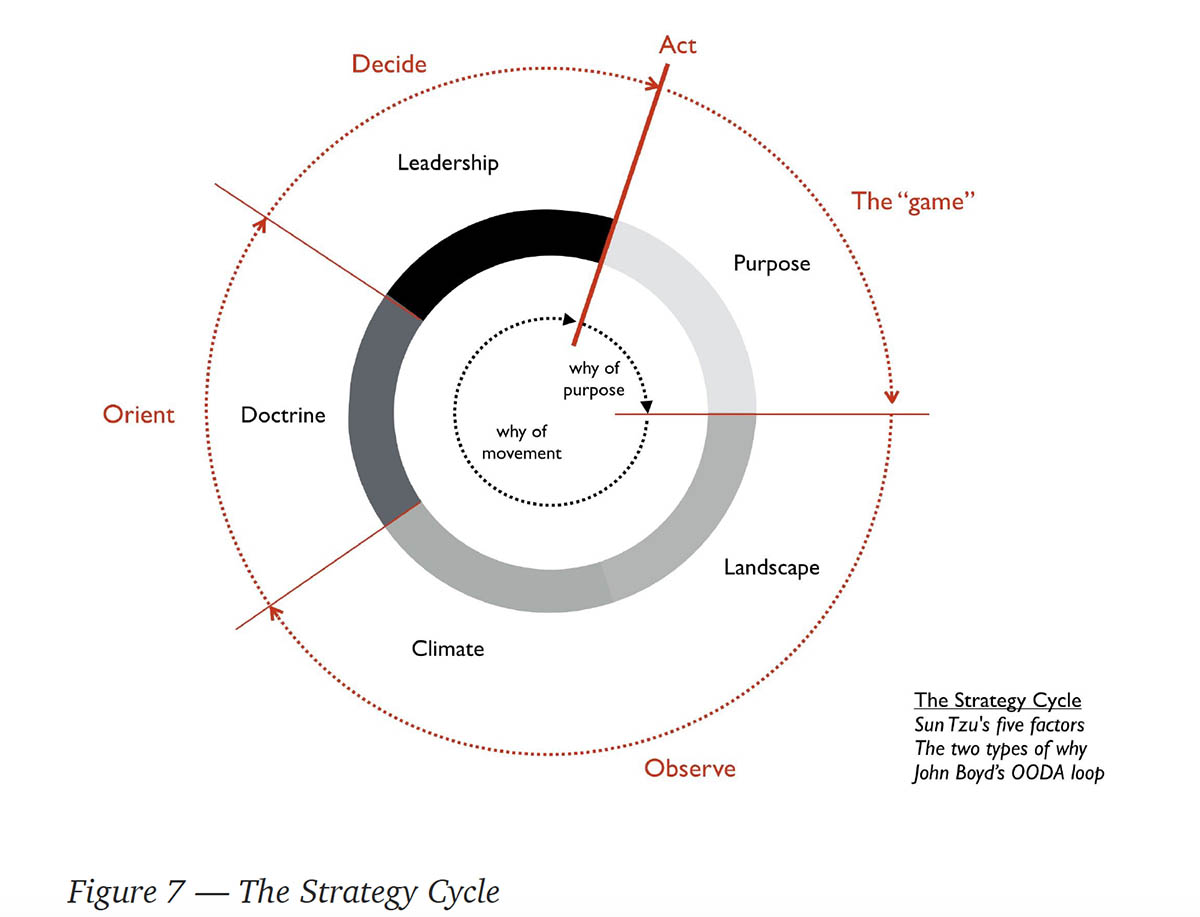
From Strategy Cycle to Wardley Map
The cycle is represented by an underlying set of roles and what those roles manifest – leaders decide, purpose sets direction, landscape and climate invite observation, doctrine or rules orient the team to their “how.”
Notice from the map that nothing is created directly within this cycle. It’s all about situation and context.
Now, let’s look at the map Wardley recommends for action within this cycle.
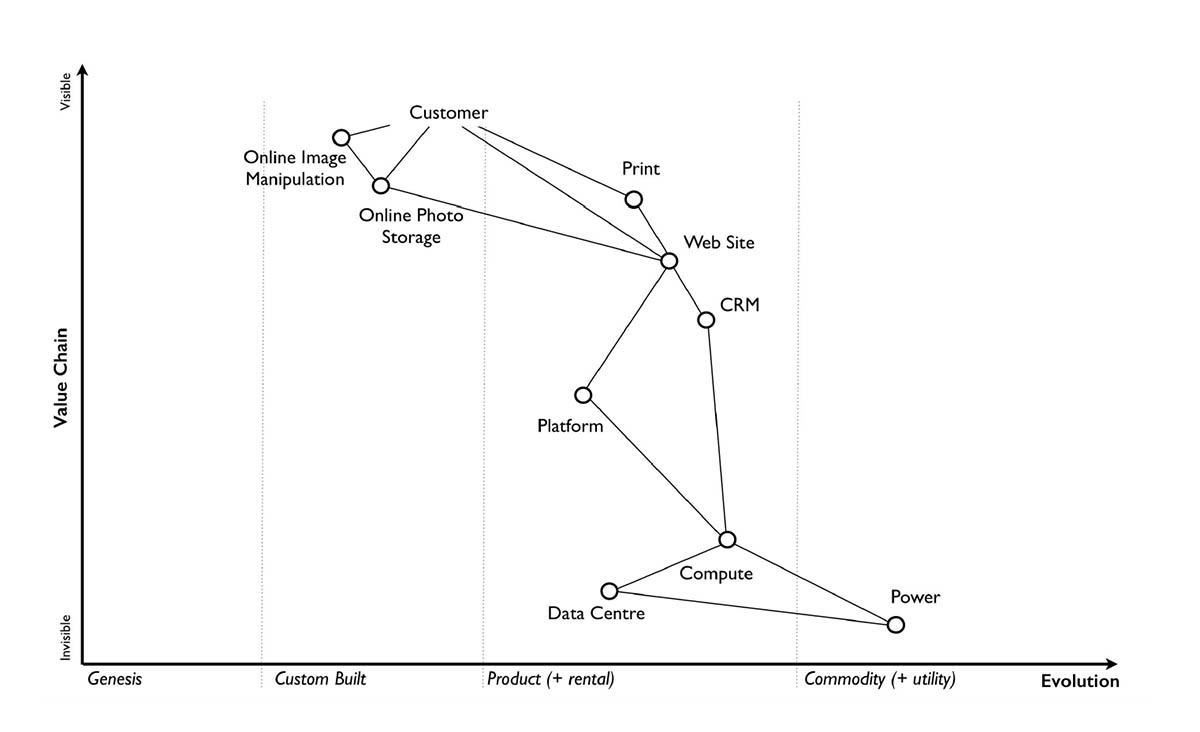
Wardly Mapping Product and Service Development
Wardley’s map takes into account the product development cycle on the X-axis. Idea genesis, where things are murky, undefined, and exploratory are on the left. Custom products, high cost, and unique, come next. Things that have been packaged and productized come in the third column. These can be purchased, rented, leased or licensed by customers (either B2B or B2C). In the fourth column we have commodities – things that have become so structured in their use that they are common, low-cost (or cost is based simply on supply and demand), and easy to access.
On the vertical axis we see the value chain from invisible to visible. What the customer sees and interacts with is at the top, and the engine that fuels that use is either murky or, behind the curtain, inaccessible to customers. Whether a product works to serve customers well or not is determined by a combination of visible, external, and invisible, internal components.
In today’s complex world, almost nothing is made up of elements in just one column and with one layer of visibility. For example, a website can have one of many database systems operating in the background to serve information. A new business does not necessitate by itself the genesis of a new approach to storing and serving information. In the instance a databasing system requires custom elements, many database software providers allow you or your team to create integrations between existing and custom code. In this instance, one element of your “behind the curtain” system would be an existing product or service, and another would be custom.
In many instances, creating a “new” product or service involves combining many elements within a shifting landscape. Products and services are entering and exiting the market all the time, so how do you, with your new product concept proceed?
Let’s say a new field emerges – today that’s typified by AI (artificial intelligence) systems. A Big Idea exists on the left side in the lower left corner. A few people are working on the idea, but there’s nothing actionable. The idea emerges into the public consciousness, maybe through articles in Scientific American, Wired, and Inc. magazine. There’s some money going into research. The idea is still in the left column, but it has moved from the lower left to the upper left as it builds awareness.
Next, a few universities have test pilots on a variety of concepts. Bits of the idea start to come into focus. At first, the idea was a big blob, but people started representing how AI could work with words, images, data processing, and search. These are dots rather than blobs. Some of them still exist in the left column, but some emerge as custom prototypes in the second column.
Then these prototypes expand, inviting test users. A few core competitors emerge, developing their ideas, and companies are formed, licensing use of the code and applying them to specific challenges – writing ad copy, creating images from words, blogging. These are products or services that exist in the third column. There’s variety and competition.
Some grow a customer base while others disappear.
If you are going to build a new service drawing on a combination of existing products plus custom features you integrate, which systems can you count on being there in a year? Is it worth the cost of building your own from scratch? Could other competitors emerge and claim your targeted territory before you can get your custom product off the ground?
Animating Wardley Maps
These are the kinds of problems Wardley Mapping was created to investigate and solve.
Where Wardley Mapping becomes even more powerful is in thinking of the map as evolving through time. Ever had a service that’s part of your workflow that suddenly changes, requiring retooling and a new approach? Existing services have their own maps with new tools, techniques, and “features” emerging in the left column and working their way toward productization and commodification. A product or service you purchase that is a foundational design or production tool in your lineup today may not be tomorrow.
I consider this “feature” dance to be businesses current solution to the dull march toward commodification. If the core service or product can be continually updated with new and novel features, it can remain in a magical world where it’s a product or service we can buy, and we have a choice – to adopt the newest beta version (suggesting it’s in the ‘custom’ column) or the previous, stable release (solidly in the stable product column.)
Products and services enter and exit your zone of possibility over time. That is to say, there are things you won’t consider adding to your map today, but tomorrow, they may come into focus. I think of that as a z-axis on the map. There are things that are in focus now that are on the map and there are things that are a bit distant from us that come into focus and appear on the map for one reason or another.
It’s important here to not just fixate on the product or service portion of the map. That’s where myopia sets in and product features run the risk of becoming whiz bang effects that no-one really needs, wants, or cares about.
Where we started out was with people and their needs, both internal and external to the organization. People’s wants, needs, and expectations change over time as well. The map of wants and needs is continually shifting, and an organization would be wise to spend more of its time on understanding people, how they work and the challenges they face along the way.
So, each customer, employee, product manager and so on has their own view – their own mental map of things that are fascinating, new ideas, and old-hat standbys. Often customers will make decisions that seem wildly out of character, but in fact, when we engage with and understand their mental map that includes their hopes, dreams, wants, needs, dependencies, tools (products and services), and outcomes, we can start to see reasons why they go in a unique direction.
It’s important to note that all of these individual’s mental maps could look like a Wardly map, or something altogether different. It’s only in engaging with people and inquiring that we can start to see and understand people’s worldview in order to translate it into our perspective. As we understand those views and experiences we can start to integrate them into our map of people and needs, then start mapping solutions.
Using Strategy Tactics by Pip Decks to Unpack Needs for Strategy and Direction
In the Strategy Tactics deck, The four columns in the Wardley Map play out in different ways depending on context. Here are four of at least 11 cards that break down components of a hardly map into bite-sized pieces:
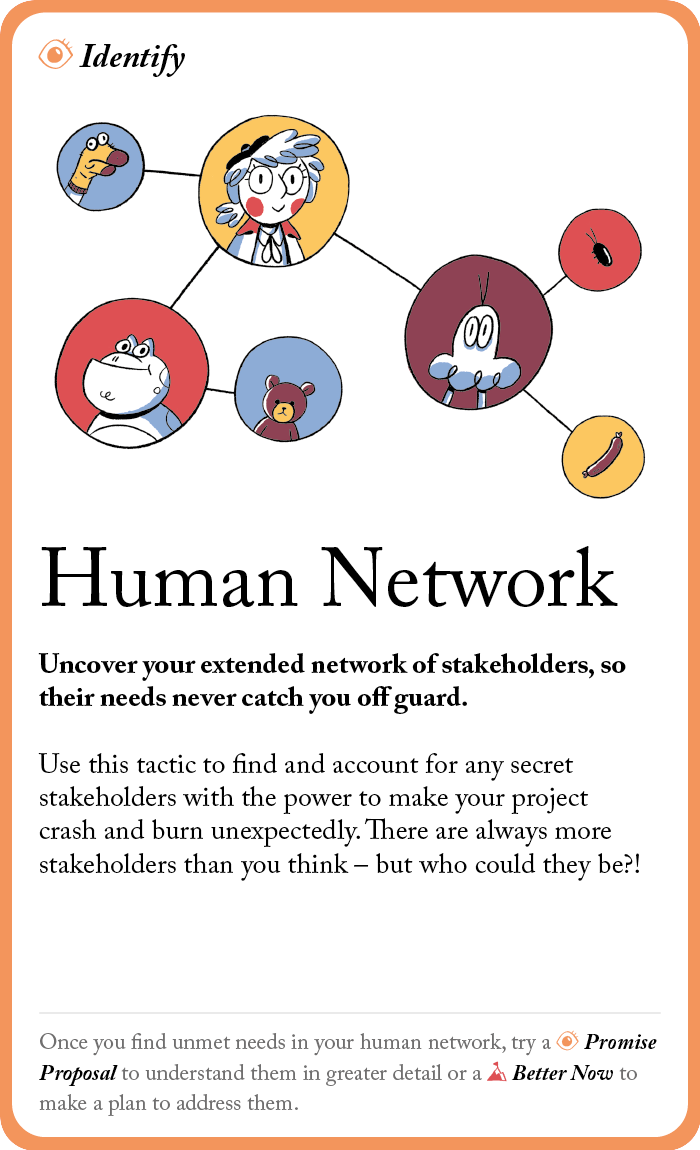
Human Network
human network – human network is all about understanding people and how they connect to a set of needs and desires.
The goal is to map everyone that is going to be dependent upon something in your product or service offer. These are individuals and/or groups that are both internal and external to your organization.
The goal? to make sure no one is left out in terms of what’s necessary to effectively deliver the result or results that will become a part of your product/service promise.
Promise Proposal
This is your hunch. Your idea of what you can promise for your customer or client. Avoid the delusion that you are creating a final product or service in one fell swoop. This is a process of exploring potential and identifying capacity to find something you can and want to do for a prospective audience that you think will serve them.
Later in the process you’ll prototype and test the product with others, but for now, think about the needs and relationships you see, and how you can add value.
Value Chain
This is the vertical part of your map without the horizontal. It answers the question, “How will we fulfill our product promise?” It includes both innovative, new things you create and products and services that you purchase to integrate with your value chain, as well as partnerships or fulfillment agreements you contract.
Market Proposal
This is the horizontal portion of your Wardley map. Where does your proposed solution fit in with market perspectives today?
It’s helpful to have the “human network” processes ongoing, because if you just do that one time, you get a snapshot. If it takes you weeks or months of development to get to a market analysis, those perspectives may have shifted.
What you are looking at in market perspectives is how the market views your product or service in relation to its lifecycle (should it follow something that looks like a traditional product lifecycle) from initial idea through development, launch, adoption, and eventually, commodification.
You can see how segmenting, dividing roles, and continually evaluating these results in a living document. You can track how things change over time by making multiple maps and storing them sequentially. Scrolling through gives you an historical animation of your thinking.
Innovation Tactics addresses further steps along the strategy development process. How will you test and experiment with a mix of solutions over time? How do you avoid getting stuck in historical organizational thinking? How do you avoid becoming wooed by the allure of the “new” but not yet realizable?
It also includes many cards that integrate other human-centered design techniques to inform and strengthen the assessment if people and dependencies that are at the root of strategic development in this deck.
Are you ready to explore Wardly Mapping further?
Get 15% off your Strategy Tactics deck today with our affiliate link and visit
Want to learn brand development?
In addition, increase your ability to create brand platforms and brand communications frameworks by taking my class: Brand Building to Create a Big Impact.
Stay Connected with Murdock Media Production!
If you like this content, subscribe to our YouTube channel for more on story archetypes, brand storytelling, and brand development.
And drop me a line with the form below to let me know how your brand building is going. I look forward to seeing how you discover your brand and go with your audience on your own unique journey.

